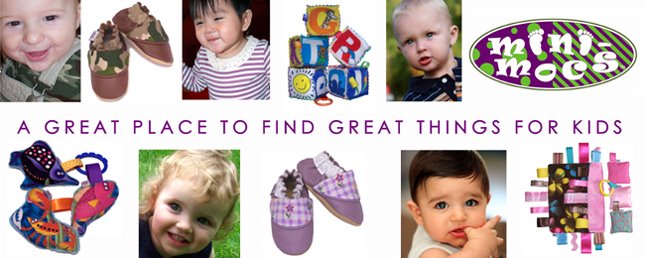It's Nap Time!

From 1 year to 2 years of age most babies will start to take only one nap a day. This change can be a big adjustment, affecting baby's temperament which will ultimately affect yours. One of the tell tale signs that your baby maybe ready to make the transition from 2 naps per day to 1 nap per day is if they sleep sound through one and is resists taking the other. When you see signs of resistance it's a good time to start moving toward reducing baby's nap to 1 per day. It is important to watch your child's behavior as your making this transition to determine if they are truly ready to make the switch. Rushing your child into this is not good for your baby or for you. For younger babies morning naps are crucial for biological reasons. Morning naps tend to be deeper and include REM sleep which is important for very early brain development. While sleep is still very important by the time baby reaches 12 months they don't need quite as much. Remember the ages listed here are a range for average age development, your baby is an individually unique person. If you have questions always consult your pediatrician.
 Your baby needs 2 naps a day if...
Your baby needs 2 naps a day if...
they are less than 1 year old. Very few babies younger than 1 can make this transition easily and should not be rushed into it.
they resist going down by playing, talking or fussing yet always end up falling asleep and nap for an hour or more.
a ride in the car almost always puts them to sleep.
not taking their nap results in fussy or cranky behavior.
they display mood changed including fussiness or even tantrums with 3 to 4 hours after waking in the morning.
Your baby may be ready for 1 nap a day if...
- they play and fuss for more then a half hour before falling asleep and then only nap for a short time.
- car rides in the morning or early day don't coax them to sleep.
- they remain cheerful even if they miss their nap and stay that way until their next nap time or bedtime.
- they sleep sound for only one nap a day and stay awake or are restless during the other.
Tips for a successful transition...
Don't think of it as "one less nap" per day. It's really just a change in scheduling. It's best that the new nap take place at a time that is between the two previous nap times. Because baby is now only napping once a day, this new nap should last longer than either nap prior but most likely not as long as the 2 naps combined.
Keep your baby busy with activities until 30 minutes before nap time including being outdoors as much as possible. Give your baby a healthy snack this will allow them to start to wind-down prior to their nap. It may be helpful to divide lunch into 2 sittings, one half before nap and the other half after.
Your child will let your know when they are ready to nap such as yawning or rubbing their eyes. Responding to these signs quickly will help your baby make the transition easier which means much less chance of them getting overtired and having tantrums or having to cry themselves to sleep.
In the beginning you may want to still have two set times a day as part of a routine. One should be a time dedicated for sleep the other should be a quiet restful time. If your baby falls asleep during the quiet time it's best to wake them gently after about an hour. If you allow them to sleep longer than that it could effect their night time sleep pattern.
One thing to keep in mind is that even after you've made the transition from 2 naps to 1 there may still be days when an extra nap is needed, pay attention to these signs and give baby what they need.
*this article was written using information gathered while doing research on the Internet. prior to implementing any of these recommendations you should consult your child's pediatrician .
_________________________________________________
ITALIAN TRANSLATION
 E’ ora della nanna Dai 12 ai 24 mesi, la maggior parte dei bambini fa un solo pisolino al giorno. Questo rappresenta per loro un grande cambiamento, che può influenzarne l’umore e può avere conseguenze anche sul vostro. Uno dei segni eloquenti che indica che il vostro bambino è pronto a compiere la transizione da 2 a 1 pisolino al giorno, è la resistenza ad addormentarsi durante il giorno. La comparsa di tale resistenza è un buon momento per iniziare a muoversi verso la riduzione di un solo riposino al giorno. E 'importante osservare il comportamento di vostro figlio per rendere questo passaggio definitivo e per capire se effettivamente sono davvero pronti a fare lo switch. Anticipare i tempi sarà negativo per il tuo bambino o per voi. Per i più piccoli,i sonnellini mattutini sono fondamentali per ragioni biologiche. I pisolini mattutini tendono ad essere più profondi e comprendono il sonno REM che è importante per lo sviluppo del cervello. Mentre il sonno è sempre molto importante per i bambini che devono raggiunge i 12 mesi hanno bisogno di molto riposo. Ricordate i tempi qui elencati sono un range di età media di sviluppo, il vostro bambino è una persona individualmente unica. Se avete domande consultate sempre il vostro pediatra.
E’ ora della nanna Dai 12 ai 24 mesi, la maggior parte dei bambini fa un solo pisolino al giorno. Questo rappresenta per loro un grande cambiamento, che può influenzarne l’umore e può avere conseguenze anche sul vostro. Uno dei segni eloquenti che indica che il vostro bambino è pronto a compiere la transizione da 2 a 1 pisolino al giorno, è la resistenza ad addormentarsi durante il giorno. La comparsa di tale resistenza è un buon momento per iniziare a muoversi verso la riduzione di un solo riposino al giorno. E 'importante osservare il comportamento di vostro figlio per rendere questo passaggio definitivo e per capire se effettivamente sono davvero pronti a fare lo switch. Anticipare i tempi sarà negativo per il tuo bambino o per voi. Per i più piccoli,i sonnellini mattutini sono fondamentali per ragioni biologiche. I pisolini mattutini tendono ad essere più profondi e comprendono il sonno REM che è importante per lo sviluppo del cervello. Mentre il sonno è sempre molto importante per i bambini che devono raggiunge i 12 mesi hanno bisogno di molto riposo. Ricordate i tempi qui elencati sono un range di età media di sviluppo, il vostro bambino è una persona individualmente unica. Se avete domande consultate sempre il vostro pediatra.
 Il vostro bambino ha bisogno di due sonnellini al giorno, se ...
Il vostro bambino ha bisogno di due sonnellini al giorno, se ...
• ha meno di 1 anno di età. Un numero esiguo di bambini di età inferiore a 1 anno riesce a rendere questa transizione semplice e a non risultare affrettata.
• resiste a giocare, parlare o agitarsi ma finisce sempre per addormentarsi e schiacciare un pisolino per un'ora o più.
• un giro in macchina quasi sempre lo mette a dormire.
• non fare il pisolino, lo rende agitato e dal comportamento irritabile.
• mostra cambiamenti di umore tra cui capricci ed agitazione anche dopo 3 o 4 ore dopo il risveglio al mattino.
 Il vostro bambino può essere pronto per 1 pisolino al giorno, se ...
Il vostro bambino può essere pronto per 1 pisolino al giorno, se ...
• gioca e si agita per più di mezz'ora prima di addormentarsi e poi pisola solo per un breve periodo.
• giri in macchina la mattina o nella prima parte della giornata non lo inducono a dormire.
• rimane allegro anche se perde il suo pisolino e resta così fino alla prossimo riposino o sino alla nanna serale.
• dorme solo una volta al giorno e resta sveglio o è inquieto durante gli altri sonnellini.
Suggerimenti per una transizione di successo ... Non pensare che sia"un pisolino di meno" al giorno. Si tratta solo di un cambiamento nella programmazione. È meglio che il nuovo sonnellino si collochi in un tempo intermedio tra i precedenti. Poiché il bambino dormirà una sola volta al giorno, questo nuovo pisolo deve durare più dei quelli precedenti , ma molto non tanto quanto fossero 2 sonnellini insieme. Tenete il bambino occupato con diverse attività fino a 30 minuti prima dell'orario del pisolino, ad esempio stare all'aria aperta il più possibile .Prepara al tuo bambino un sano spuntino che gli permetterà di iniziare a rilassarsi prima del pisolino. Può essere utile dividere il pranzo in due sedute, una metà prima del pisolino e l'altra metà dopo. Il vostro bambino fa intendere di avere sonno sbadigliando o sfregandosi gli occhi; dare risposta a questi segni rapidamente aiuterà il vostro bambino a semplificare la transizione ciò implica che i bambini facciano meno capricci, non siano eccessivamente stanchi o debbano piangere per addormentarsi. Cambiare l’ora del pisolo può essere fatto più semplicemente se fin dall’inizio si pianificano due diversi momenti nella giornata per far riposare i bambini: uno in cui farli dormire e uno in cui farli rilassare. Se in questo secondo momento il bimbo si addormentasse, sarebbe meglio non farlo dormire per più di un’ora, in quanto potrebbe poi fare fatica ad addormentarsi alla sera. Una cosa da tenere a mente è che anche dopo aver fatto il passaggio da 2 a 1 riposino ci possono essere ancora giorni in cui un pisolino supplementare sia necessario, prestate attenzione a questi segni per dare al bambino ciò di cui ha bisogno.
* Questo articolo è stato scritto utilizzando le informazioni raccolte, ricercando su Internet. Prima di attuare una qualsiasi di queste raccomandazioni è necessario consultare il pediatra del bambino.








































